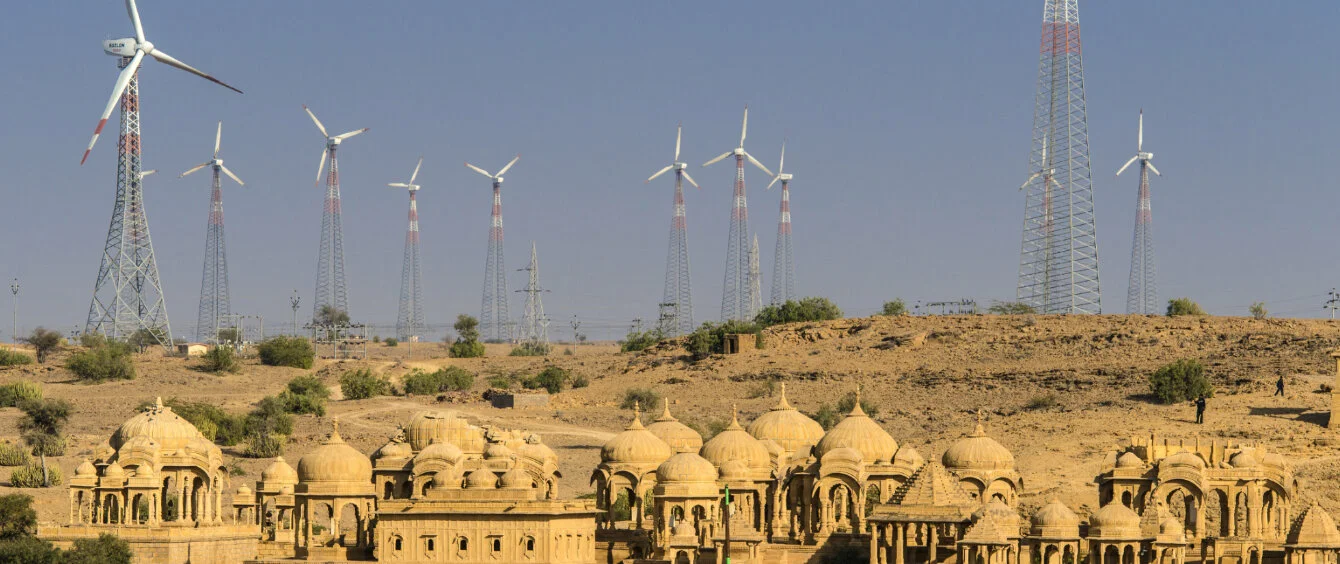Onshore wind is becoming a mainstay of India’s power system and with good reason. Projects are being developed below the cost of new coal plant, the country’s primary source of power, providing a clean and cheap alternative to fossil fuels.
Total power demand is rising by a compound average growth rate (CAGR) of about 6%, which is expected to increase electricity demand from 1,276 TWh in 2021 to 2,172 TWh by the end of the decade. However, despite having over 40 GW of installed onshore wind capacity, the pace of wind deployment has slowed.
Following an impressive CAGR of 13% from 2012-2016, installed wind capacity growth declined to an annual average of 5% from 2016-21. Targets set by the government mean this rate of growth needs to accelerate to 15% over the next decade, according to analysis by the Global Wind Energy Council (GWEC).
Disruptive factors increase the risk of project cancellations
The slowdown can be attributed to a number of factors, such as the introduction of competitive bidding, then, in 2020-21, the impact of the Covid-19 pandemic followed by disruptions to the supply chain and delays due to India’s monsoon period.
In 2021, only 1.45 GW of wind was installed, compared with an expected 2.3 GW. This was higher than in 2020 (1.14 GW), but lower than in 2019 (2.07 GW). Four fifths of these deployments resulted from central government auctioning, with the remainder roughly split between state government tenders and the commercial and industrial (C&I) sector.
Fierce competition in the bidding process has led to a concentration of projects in the states of Gujarat and Tamil Nadu, which have both the best wind resources and the lowest cost of land. However, this has created bottlenecks, for example in gaining grid access, leading to delays and cost overruns.
In addition, GWEC warns that some projects face cancellation as low-cost bidding in the current tender design leaves no room to absorb inflationary pressures in the wind supply chain. Cancellations have also occurred as a result of delays in signing Power Supply Agreements with the country’s cash-strapped distribution companies (discoms).
The poor financial condition of the discoms continues to hamper state-level tenders for wind projects. GWEC expects about 1.8 GW of state level projects to come online by 2025.
Demand for Round-the-Clock (RTC) power rises
GWEC‘s report notes increasing interest in wind/solar hybrid (WSH) projects, buoyed by waivers for open access and inter-state transmissions system charges. WSH project costs are generally lower than for standalone wind and their less variable generation profile is attractive to off-takers.
However, for round-the-clock power, they need to be coupled with either conventional thermal generation or battery storage.
Battery storage costs remain expensive relative to thermal coupling, but falling costs should result in fully sustainable RTC power generation in the future. Despite rising this year, battery pack costs have declined by an annual 8% since 2018 and are expected to continue falling by about 9% a year until 2026, according to GWEC.
Indeed, the report says: “future auctions are expected to be dominated by WSH projects, which will replace wind auctions.”
Central government is improving the investment environment
To address the slowdown in installations, the government has taken steps to improve the investment environment. Last year, it allowed non-discriminatory access to the inter-state transmission system.
This year, it provided a trajectory for the country’s Renewable Purchase Obligation (RPO) through to 2030, which is in line with India’s mammoth ambition of achieving 50% renewable energy by capacity in the country’s overall generation portfolio by the end of the decade. It also announced a separate wind RPO to create additional demand for the sector.
These policy developments are expected by GWEC to have a substantial positive impact on the rate of new wind installations.
The central tendering process has also seen changes. These include specifying off-taker and grid connection details prior to auction, the removal of tariff caps and reductions in performance bank guarantees. The effect of the latter is to improve wind developers’ liquidity, reducing the likelihood of project cancellations. Capacity restrictions for repowering projects have also been removed from the most recent tenders.
Standalone wind tenders in 2021 and this year have been oversubscribed, compared with volumes standing at 50-80% in the previous two years.
Central scenario puts new wind installations at 19.4 GW over five years
Policy changes and the enthusiasm for WSH projects have created a strong pipeline of projects and are expected to result in an acceleration of wind installations in coming years. GWEC estimates that 19.4 GW of new wind capacity across the central, state and C&I sectors will be installed by 2026, with new capacity peaking in 2024 at 4.6 GW.
However, realising this volume of new projects depends both on how the project pipeline is impacted by supply chain disruptions and inflation and future policy developments. GWEC provides a conservative estimate of 15 GW over the next five years and a more optimistic scenario of 23.7 GW. Nonetheless, even at the lower end of the forecast, India’s onshore wind sector looks set for acceleration, providing a central pillar on which to base the country’s energy transition.
